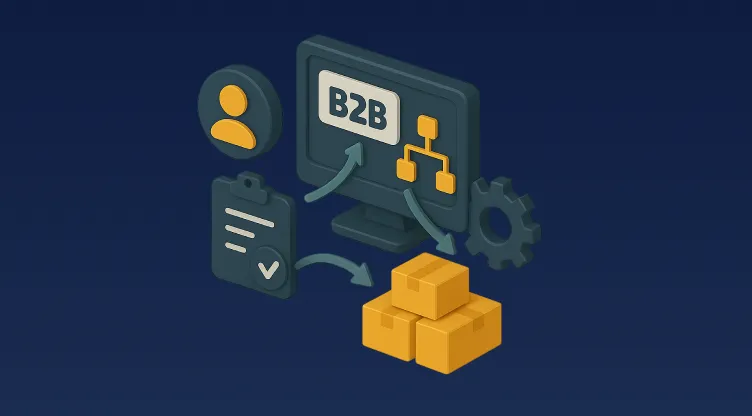Inventory Liquidation & Clearance: Dealing with Slow-Moving Stock Effectively

Table of Contents
In the ever-competitive world of retail and e-commerce, maintaining optimal inventory levels is key to profitability. Yet, even with the most advanced forecasting models, businesses often encounter a persistent challenge: slow-moving stock. These stagnant items occupy valuable warehouse space, tie up capital, and risk becoming obsolete.
Effective inventory liquidation and clearance strategies help mitigate these issues, ensuring stock turnover remains healthy and aligned with market demand. In this guide, we will explore practical and regionally relevant methods for managing surplus inventory, enhancing cash flow, and preventing future build-up. We'll also touch on digital tools like Zoho Inventory and solutions tailored for the MENA market.
Why Slow-Moving Stock Is a Silent Profit Killer
Slow-moving inventory refers to items that sit in storage longer than expected. They are usually identified by low inventory turnover rates, extended shelf time, and declining demand. These products are not necessarily obsolete, but they do not contribute to revenue as quickly as other stock.
The hidden costs of such inventory include:
- Storage fees: More space used means higher costs, especially in premium warehousing zones like Dubai or Riyadh.
- Capital blockage: Money tied up in unsold goods reduces liquidity.
- Operational inefficiencies: Complex stock lists make stock picking, tracking, and auditing slower.
- Risk of obsolescence: For fast-moving sectors like fashion or electronics, delay can turn products into dead stock.
Retailers and distributors across the MENA region, especially those in cities experiencing rapid digitalisation like Jeddah and Abu Dhabi, must find effective methods to manage and dispose of this underperforming inventory.
Identifying Slow-Moving Inventory Early
Before jumping to liquidation, it's essential to know how to spot these problematic SKUs. Consider these techniques:
Use Inventory Turnover Ratios
Calculate the frequency with which stock is sold or used over a period. A lower turnover suggests slow movement.
Implement ABC Analysis
Segment stock by value and velocity:
- A: High-value, fast-moving
- B: Moderate value and movement
- C: Low value, slow-moving (often targets for clearance)
Set Shelf-Life Benchmarks
Use shelf-time thresholds (e.g. 90 days) to tag items for review.
How Digital Systems Like Zoho Inventory Can Help
Stock management software such as Zoho Inventory offers real-time tracking, sales analytics, and automatic reorder alerts. These tools help businesses avoid overstocking and identify slow-moving stock quickly. Features include:
- FIFO/LIFO costing methods: Understand item profitability over time.
- Bundling and kitting: Combine slow items with fast-sellers to encourage sales.
- Sales channel sync: Prevent stock duplication across platforms.
- Automated reports: Monitor stagnant inventory monthly.
For businesses in the MENA region seeking alternatives, Omniful’s WMS and OMS systems are tailored for high-volume throughput and real-time inventory tracking, critical for fast clearance cycles.
Strategies to Clear Slow-Moving Inventory
Once you've identified the culprits, it's time to move them out — profitably and efficiently. Below are proven strategies tailored to both brick-and-mortar and online retailers.
Flash Sales and Discounts
Run time-sensitive promotions to create urgency. Consider offering:
- BOGO (Buy One Get One)
- 30–70% clearance markdowns
- Tiered pricing discounts
Bundling Products
Pair slow-movers with popular products at a combined discount. For instance, a fragrance brand in Saudi Arabia may bundle a dated perfume bottle with a newer scent.
Cross-Channel Selling
List products on additional marketplaces like Amazon, Noon, or Salla. Cross-channel exposure increases visibility and reduces dead stock risks.
Engage Influencer Campaigns
Leverage regional influencers in the UAE or Egypt to spotlight clearance products, creating social proof and sparking impulse buying.
Offer Volume Discounts to B2B Buyers
Wholesalers, discounters, and bazaar retailers may be open to bulk purchase of clearance stock.
Liquidation: Last Resort or Smart Strategy?
Inventory liquidation doesn't always mean loss. When executed properly, it can free up space, recover costs, and pave the way for newer, faster-selling stock.
Sell to Liquidation Companies
MENA-based companies like Dubai Liquidators and Saudi Auction House buy unsold stock in bulk.
Host Pop-Up Clearance Events
Organise short-term retail spaces in malls or community centres in key areas like Cairo, Doha, or Manama.
Use Online Auction Platforms
Websites like Souq or Facebook Marketplace allow direct-to-consumer sales of overstock.
How Omniful Enhances Liquidation Efficiency
Omniful’s Inventory Management system provides advanced features to support fast, efficient clearance and stock control:
- Real-time inventory tracking: Prevents over-ordering and pinpoints slow SKUs.
- Batch and expiry tracking: Helps clear near-expiry goods quickly — ideal for pharma and food industries.
- Automated reorder thresholds: Avoids replenishing stagnant products.
- Multiple barcode support: Enhances SKU identification during bulk sales.
Additionally, Omniful’s WMS integrates with over 100 sales channels and supports dynamic order tagging. Retailers can label items as "clearance" or "flash deal," triggering automated workflows for fast fulfilment.
Preventing Future Overstock
Once clearance is handled, the goal becomes long-term prevention. Here's how to manage stock more effectively going forward:
Improve Demand Forecasting
Use AI-powered tools (like those in Omniful’s Supply Chain module) to predict trends and customer preferences. Demand forecasting reduces surplus and aligns procurement with actual sales patterns.
Tighten Reorder Points
Use dynamic safety stock thresholds to prevent overstock. Set alerts based on real-time trends.
Conduct Regular Audits
Weekly or monthly audits help in reviewing SKU performance and aligning your catalog.
Adopt a Lean Inventory Model
Focus on Just-in-Time (JIT) replenishment, especially for fast-moving categories like FMCG and electronics.
Regional Considerations in MENA
In MENA, factors like consumer seasonality (e.g., Ramadan, Hajj, and Eid sales), customs clearance delays, and regional storage constraints require nuanced stock control strategies.
Retailers and e-commerce brands in the UAE, Saudi Arabia, and Egypt should consider:
- Using bonded warehouses for duty deferment.
- Leveraging free zones like JAFZA or KIZAD to reduce warehousing costs.
- Partnering with 3PLs that support reverse logistics to manage returns and avoid re-stocking slow-movers.
Omniful’s TMS and reverse logistics integration make it easier to track returns and plan efficient re-distribution — crucial for clearance planning.
FAQs on Inventory Liquidation
What is the difference between liquidation and clearance?
Clearance is a promotional strategy to sell items at a reduced price. Liquidation is a broader term that may involve selling to third-party buyers or in bulk.
Can I profit from liquidation?
Yes, if done strategically — through bundling, auctions, or wholesale clearance to resellers.
Is it better to donate unsold inventory?
In some cases, yes. Donating can provide tax relief and support CSR initiatives, particularly during peak giving periods in the Islamic calendar.
How often should I review inventory for slow movers?
Ideally, review inventory every month, especially if your turnover cycles are short (e.g., apparel, food).
Final Thoughts
Slow-moving stock is an inevitable part of retail, but it doesn't have to be a setback. Through proactive management, strategic promotions, and the right tools like Zoho Inventory or Omniful’s WMS, businesses can turn inventory burdens into opportunities.
Effective liquidation and clearance aren't just about freeing up space — they’re about regaining momentum, improving financial health, and preparing for your next best-seller.
Let’s help you accelerate your inventory clearance journey. See Omniful in Action — book a demo to explore how our AI-powered inventory and supply chain tools can reduce stagnation and drive smarter stock decisions.























